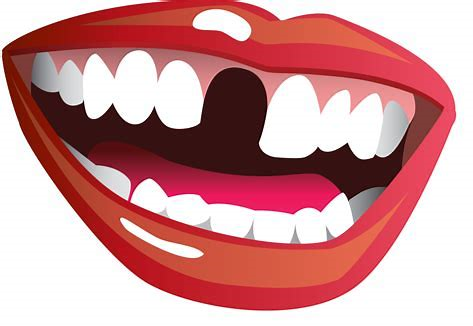Do I Need to Replace a Missing Tooth?
March 23rd, 2018
If you’ve lost a tooth, especially one that’s not visible to others when you speak or smile, you may be thinking that you can slide by without replacing it. Sure, it will feel weird for a while, but you’ll get used it — or will you? Not replacing a missing tooth can have serious physical and mental consequences. The replacement process is not as difficult as you might think and will pay off in the long run.
Physical Consequences of Not Replacing a Missing Tooth
Having a missing tooth can lead to long-term problems inside and outside your mouth.
Over time, the teeth next to the missing tooth will shift toward each other in an attempt to fill in the gap. This leads to a condition called malocclusion, which means the teeth are not aligned properly.
Malocclusion can cause serious problems like an overbite or crossbite that result in extra strain on the jaw, difficulty chewing, and even an increased risk for tooth decay. The treatment for this larger issue is braces or even surgery, which will likely end up being more expensive than a single tooth replacement would be.
The increase in tooth decay will also lead to problems with other teeth.
Missing teeth can result in not chewing your food properly (consciously or unconsciously). Not chewing your food properly can lead to digestive issues like acid reflux and malnutrition from nutrients not being absorbed properly in the digestive tract. While it may seem like a back molar hidden from view that does not need to be replaced, remember that those teeth are essential for proper chewing and digestion.
Missing teeth can also cause bone loss along the jawline, which leads to a sagging appearance around the mouth. The bone tissue no longer receives support from the tooth, so it weakens over time. Sagging faces are common among people who wear dentures. While it may be inevitable for some, you can do something about it before the sagging begins.
Mental Consequences of Not Replacing a Missing Tooth
Beyond the physical effects, having a missing tooth can have negative mental consequences in the short and long term.
For better or worse, society casts a negative light on people with missing teeth. Look closely at characters on TV or in movies who are supposed to be poor and/or unintelligent — chances are they have at least one missing tooth.
Those perceptions from pop culture spill over into reality, especially in an age when just about anything can be said on social media. Even the toughest skin will weaken over time, just like the spot in your mouth where your tooth is missing.
As life expectancies continue to rise, you could be living with the stigma and difficulty speaking or eating for decades, even if you lose a tooth at age 50 or 60.
Don’t open yourself up to that type of criticism and self-doubt if you have the power to change your appearance.
Restoring Your Smile
Replacing a missing tooth is no longer the ordeal it was in your parents’ generation.
The most common treatment is a dental implant. Implants consist of a titanium screw covered by a crown or denture.
The process typically takes about three months from start to finish, which includes plenty of time for your mouth to adjust to the implant and heal before the crown or denture is applied. The implant and temporary crown can be applied on the same day, allowing you to return to normal activities while the permanent crown is made.




